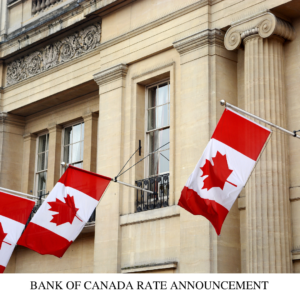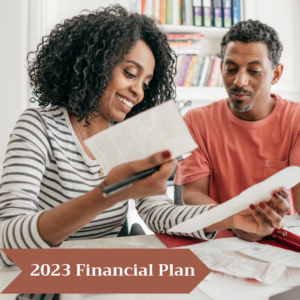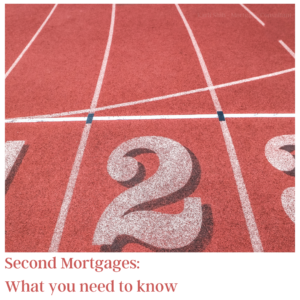Bruce Ball, FCPA, FCA, CFP
November 21, 2022
The federal government has released new details about a new type of registered savings plan aimed at helping Canadians save for their first home. Find out who qualifies and other key features of these plans.
The Tax-Free First Home Savings Account (FHSA) was first proposed in Budget 2022. A backgrounder1 and draft legislation was released on August 9, 2022, which provided more details on the plan’s design. On November 4, 2022, the revised legislation was released as part of Bill C-32 (Fall Economic Statement Implementation Act, 2022) and included additional changes2. Assuming the bill will be passed, the FHSA rules will enter into force on April 1, 2023.
In this blog, we highlight the key elements of the FHSA proposals and answer some top questions you might have about this new plan.
FHSAs – THE BASICS
The FHSA offers prospective first-time home buyers the ability to save $40,000 tax-free. Like registered retirement savings plans (RRSP), contributions to an FHSA would be tax deductible. Like tax-free savings accounts (TFSA), income and gains inside an FHSA as well as withdrawals would be tax-free.
Who is eligible?
To open an FHSA, you must:
- be an individual resident of Canada
- be at least 18 years of age
- be a first-time home buyer, which means you, or your spouse or common-law partner (“spouse”) did not own a qualifying home that you lived in as a principal place of residence at any time in the year the account is opened or the preceding four calendar years
For the purposes of the first-time home buyer’s test, a home owned by your spouse in which you lived during the relevant period will only put you offside of the test if that person is still your spouse when the FHSA is opened.
How much can you contribute?
You can contribute up to $40,000 over your lifetime and up to $8,000 in any one year, including 2023 even though the rules don’t come into effect until April 1, 2023.
The annual contribution limit applies to contributions made within the calendar year. Unlike RRSPs, contributions made within the first 60 days of a given calendar year cannot be attributed to the previous tax year.
You may carry forward up to $8,000 of your unused annual contribution amount to use in a later year (subject to the lifetime contribution limit). For example, if you open an FHSA in 2023 and contribute $5,000, you can contribute up to $11,000 in 2024. Carry-forward amounts do not start accumulating until after you open an FHSA.
You can hold more than one FHSA, but the total amount you can contribute to all of your FHSAs cannot exceed your annual and lifetime FHSA contribution limits.
Like TFSAs and RRSPs, a tax on overcontributions to an FHSA would apply for each month (or part-month) that the account is over the limits. The tax applies at the rate of 1% to the highest amount of the excess that existed in that month.
An overcontribution can be dealt with in few different ways. First, the account holder can wait until the following year, and then the additional annual contribution room that arises may absorb the excess contribution. Alternatively, it is possible to request that a “designated amount”, not exceeding the overcontribution, be returned to the account holder as a tax-free withdrawal or a transfer to an RRSP. If a tax-free withdrawal is received, the original contribution giving rise to the overcontribution is not deductible. Finally, a taxable withdrawal would also reduce an over-contribution to an FHSA.
Finally, like RRSPs, you can make a contribution but defer the deduction until a later year.
What types of investments can an FHSA hold?
Permitted investments for FHSAs are the same as for TFSAs. These include mutual funds, publicly traded securities, government and corporate bonds, and guaranteed investment certificates.
The prohibited investment rules and non-qualified investment rules applicable to other registered plans will also apply to FHSAs. These rules are intended to disallow non-arm’s length investments and investments in assets such as land, shares of private corporations and general partnership units.
Withdrawals
Qualifying withdrawals to buy a qualifying home purchase are not taxable. To qualify, the withdrawal must meet these conditions:
- You must be a first-time home buyer when you make the withdrawal. There is an exception to allow individuals to make qualifying withdrawals within 30 days of moving into a qualifying home.
- You must have a written agreement to buy or build a qualifying home before October 1 of the year following the year of withdrawal, and you must intend to occupy the home as a principal place of residence within one year after buying or building it.
- A qualifying home is a housing unit located in Canada (or a share in a cooperative housing corporation that entitles the taxpayer to possess and have an equity interest in a housing unit located in Canada).
Any funds left over after making a qualifying withdrawal can be transferred to an RRSP or registered retirement income fund (RRIF), penalty-free and tax deferred, as long as you transfer the remaining funds by December 31 of the following year, since the plan stops being an FHSA at that time. Transfers do not reduce or limit your available RRSP room.
If you take out FHSA savings as a non-qualifying withdrawal, you must include the amount in income for the year of the withdrawal and tax will be withheld.
Finally, withdrawals and transfers do not replenish FHSA contribution limits.
Administration
To open an FHSA, you will first need to confirm your eligibility to an eligible issuer.
Financial institutions will have to file annual information returns with the Canada Revenue Agency (CRA) for each FHSA they administer. The CRA will use this information to administer the plans and provide basic FHSA information to taxpayers to help them determine how much they can contribute each year. Taxpayers will still need to monitor the limits to avoid overcontributions.
To make a qualifying withdrawal, you will need to submit a request to your FHSA issuer confirming your eligibility. Issuers will not withhold taxes on qualifying withdrawals.
When any withdrawals are made – qualifying or non-qualifying – the FHSA issuer must prepare an information slip stating the amount of the withdrawal and for non-qualifying withdrawals, the amount of income tax withheld.
TOP QUESTIONS YOU MAY HAVE ABOUT FHSAs
What happens if the FHSA funds are not used to purchase a first home?
If you do not use the funds in your FHSA for a qualifying first home purchase by the earlier:
- the end of the 15th year after the plan was opened, or
- the end of the year you turn 71 years old,
your FHSA will cease to be an FHSA and you must close the plan. Any unused balance in the plan can be transferred into an RRSP or RRIF or withdrawn on a taxable basis.
If the plan is not closed prior to its “cessation date” described above or if the plan otherwise loses its status as a FHSA, the FHSA holder will have a deemed income inclusion equal to the fair market value of all property of the FHSA immediately before the cessation of FHSA status. Therefore, if a transfer to an RRSP or RRIF makes sense, it should be done before the plan loses its FHSA status.
Since you can transfer funds from an FHSA to an RRSP or RRIF without affecting your RRSP limit, an FHSA may have appeal for those who rent their home. With an FHSA, they may still qualify as a first-time home buyer and accumulate funds on a tax-deferred basis, and they can still transfer the funds to an RRSP or RRIF if they do not eventually buy a qualifying home.
Can I contribute to my spouse’s or child’s FHSA?
The FHSA holder is the only taxpayer permitted to deduct contributions made to their FHSA. You cannot contribute to your spouse’s FHSA and claim a deduction.
That said, the legislation allows an individual to make FHSA contributions with funds provided by their spouse without the attribution rules applying to the income earned in the FHSA from these contributions. Similarly, no attribution arises if you give cash to an adult child to contribute to their FHSA.
What happens to my FHSA on my death?
Like TFSAs, an individual may designate their spouse as the successor account holder and the account could maintain its tax-exempt status after the individual’s death.
If the surviving spouse is named as the successor holder and meets the FHSA eligibility criteria, they would become the FHSA’s new holder immediately on the original holder’s death. The transfer would not affect the spouse’s own FHSA contribution limits. Note that if the deceased individual had an overcontribution to their FHSA immediately before death, the successor holder (i.e. the spouse) may be treated as having made a FHSA contribution at the beginning of the month following the death. The deemed contribution amount is the amount of the overcontribution but will be reduced by the fair market value of FHSA property that did not remain in the spouse’s plan. This deemed contribution will reduce the spouse’s FHSA contribution room, or potentially put the spouse in their own overcontribution position depending on the circumstances.
- If the surviving spouse is not eligible to open an FHSA, amounts in the FHSA could instead be transferred to an RRSP or RRIF, or withdrawn on a taxable basis. If the FHSA beneficiary is not the deceased account holder’s spouse, the funds would need to be withdrawn and paid to the beneficiary. Unlike RRSPs or RRIFs where the value of the plan is generally included as income in the account holder’s terminal return, the payment of the plan balance will be taxable to the beneficiary. If the plan beneficiary is the deceased’s estate, and the surviving spouse is an estate beneficiary, then the estate can pay the plan proceeds to the surviving spouse, and if a joint designation is made, the spouse will be treated as though they received a payment from the plan directly. This may allow for a transfer to the spouse’s FHSA, RRSP or RRIF and otherwise, the spouse will be taxed on the income. If the plan proceeds are paid or payable to another estate beneficiary, then the income may be taxable to them. The payment is also subject to withholding tax.
Finally, if an FHSA is not closed by its cessation date (in this case, generally the end of the year following the year of the FHSA holder’s death), there will be a deemed income inclusion equal to the fair market value of all property of the FHSA immediately before the cessation of FHSA status at the hands of each beneficiary, or estate, if there are no named beneficiaries (i.e. it will not be included in the deceased holder’s terminal return).
What happens to my FHSA in the case of a marital breakdown?
On the breakdown of a marriage or common-law partnership, an amount may be transferred directly from the FHSA of one spouse to an FHSA, RRSP or RRIF of the other. These transfers would not restore any contribution room of the transferor or count against the contribution room of the transferee. If the transferor’s spouse has overcontributed, the amount eligible for transfer will be reduced.
What happens to my FHSA if I emigrate from Canada?
You can continue contributing to your existing FHSA after emigrating from Canada, but you cannot make a qualifying withdrawal as a non-resident. The rules specify that an individual withdrawing funds from an FHSA must be a resident of Canada at the time of withdrawal and up to the time a qualifying home is bought or built.
Withdrawals by non-residents would be subject to withholding tax.
I just immigrated to Canada. Can I open an FHSA?
Once you become a Canadian resident, you can open an FHSA as long as you qualify under the rules discussed above. To determine whether you qualify as a first-time home buyer, you must consider a foreign home you owned that would be a qualifying property if it was located in Canada. You cannot open an FHSA in a year that you owned such a home or the four previous years.
I’m a U.S. citizen. Can I open an FHSA?
U.S. citizens are generally subject to tax on their worldwide income under U.S. tax rules. Income earned in Canadian registered accounts is generally taxed as it is earned, except for retirement plans, such as RRSPs and RRIFs, that qualify for relief under the Canada-U.S. income tax treaty.
Other Canadian registered accounts of U.S. citizens, such as TFSAs and registered education savings plans (RESP), can create double tax problems and additional U.S. reporting requirements. TFSAs may be subject to tax under U.S. rules. It appears that FHSAs could create similar issues for U.S. citizens, so they should seek specific advice before opening a FHSA.
Can I transfer amounts from my RRSP to an FHSA?
You can transfer funds from an RRSP to an FHSA tax-free, up to the $40,000 lifetime and $8,000 annual contribution limits. These transfers would not restore your RRSP contribution room or generate a tax deduction.
However, a subsequent qualifying withdrawal from the FHSA would be tax-free, essentially making it a tax-free RRSP withdrawal. To maximize RRSP room, it appears that making contributions to an FHSA is the preferred approach. If money is tight, however, the ability to use transfers from an RRSP will help you maximize your FHSA’s potential tax-free withdrawal.
What’s my best bet: FHSA, Home Buyers’ Plan or TFSA?
The Home Buyers’ Plan (HBP), first implemented in the early 1990s, allows a first-time home buyer to withdraw up to $35,000 from their RRSP to purchase or build a home without having to pay tax on the withdrawal. You must then repay any amounts withdrawn to an RRSP within 15 years, starting the second year following the year in which you made the withdrawal.
The HBP continues to be available under existing rules. Thus, you can make both an FHSA withdrawal and HBP withdrawal for the same qualifying home purchase3.
The best choice depends on different factors, such as timing and the potential amount that will be saved. The withdrawals under both plans can be made tax-free, but since you will have to repay the HBP withdrawal, it appears to make sense to contribute to an FHSA first. If savings are available after FHSA contributions, then making contributions to an RRSP with a view to later use the HBP may be the preferred option where the primary goal is to save money for a down payment on a home and there are insufficient funds in the RRSP to make a full HBP withdrawal.
However, before making additional RRSP contributions to fund future HBP withdrawals, consideration should also be given to using a TFSA to save money beyond the FHSA. Where a choice must be made as there will be insufficient savings to do both, you’ll need to consider the benefits of each alternative. Although TFSAs are not specifically designed for first-time home savings, these plans are worth considering for several reasons, including:
- the ability to save money on a tax-free basis
- the lack of any requirement to repay amounts withdrawn from a TFSA, as well as the restoration of an equal amount of contribution room in the TFSA in the year following the year of withdrawal
- the ability to withdraw funds saved in a TFSA and deposit them into an FHSA to receive a tax deduction as FHSA room becomes available
Prospective first-time home buyers should review the details of each plan to determine how to make the most of them to boost their savings. Budget 2022 also included other housing related incentives including the introduction of the new Multigenerational Home Renovation Tax Credit and doubling of both the First-Time Home Buyers’ Tax Credit and Home Accessibility Tax Credit. The proposed legislation for these two measures has also been included in Bill C-32.
The government aims to make FHSAs available to individuals after March 2023, but at the time of writing this blog, the enabling legislation has not been enacted. Since the rules are still in draft form, any decisions on how best to save for the purchase on a home should be delayed if possible until the final rules have been enacted.
Source: https://www.cpacanada.ca/en/business-and-accounting-resources/taxation/blog/2022/november/faqs-tax-free-first-home-savings-account






